This document introduces Python, a general-purpose programming language that functions as both a programming and scripting language. It covers its history, applications in various fields, reasons for its popularity among users, and provides guidance on installing Python and writing basic code. Key features include its object-oriented structure, readability, extensive libraries, and strong community support.
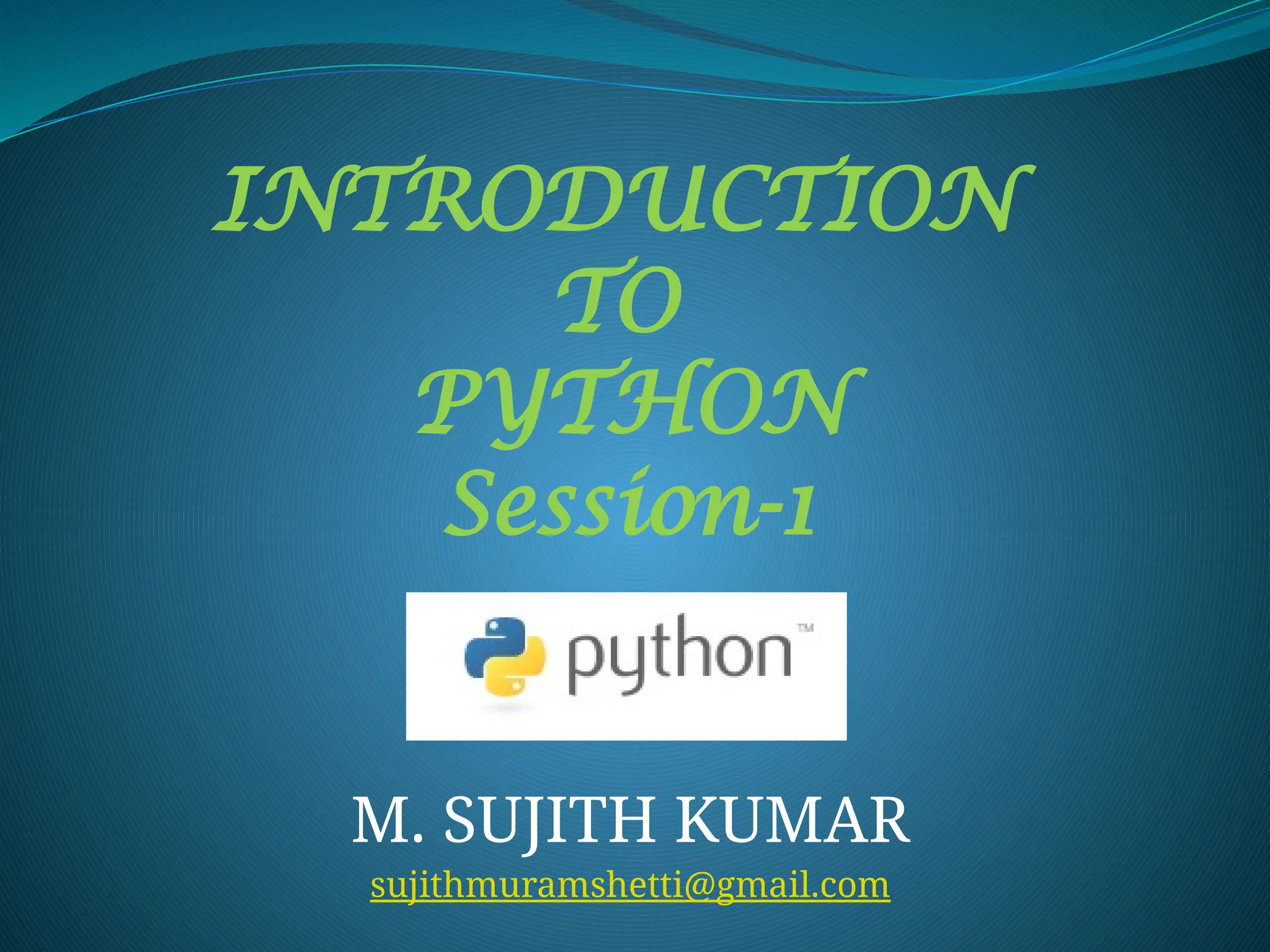
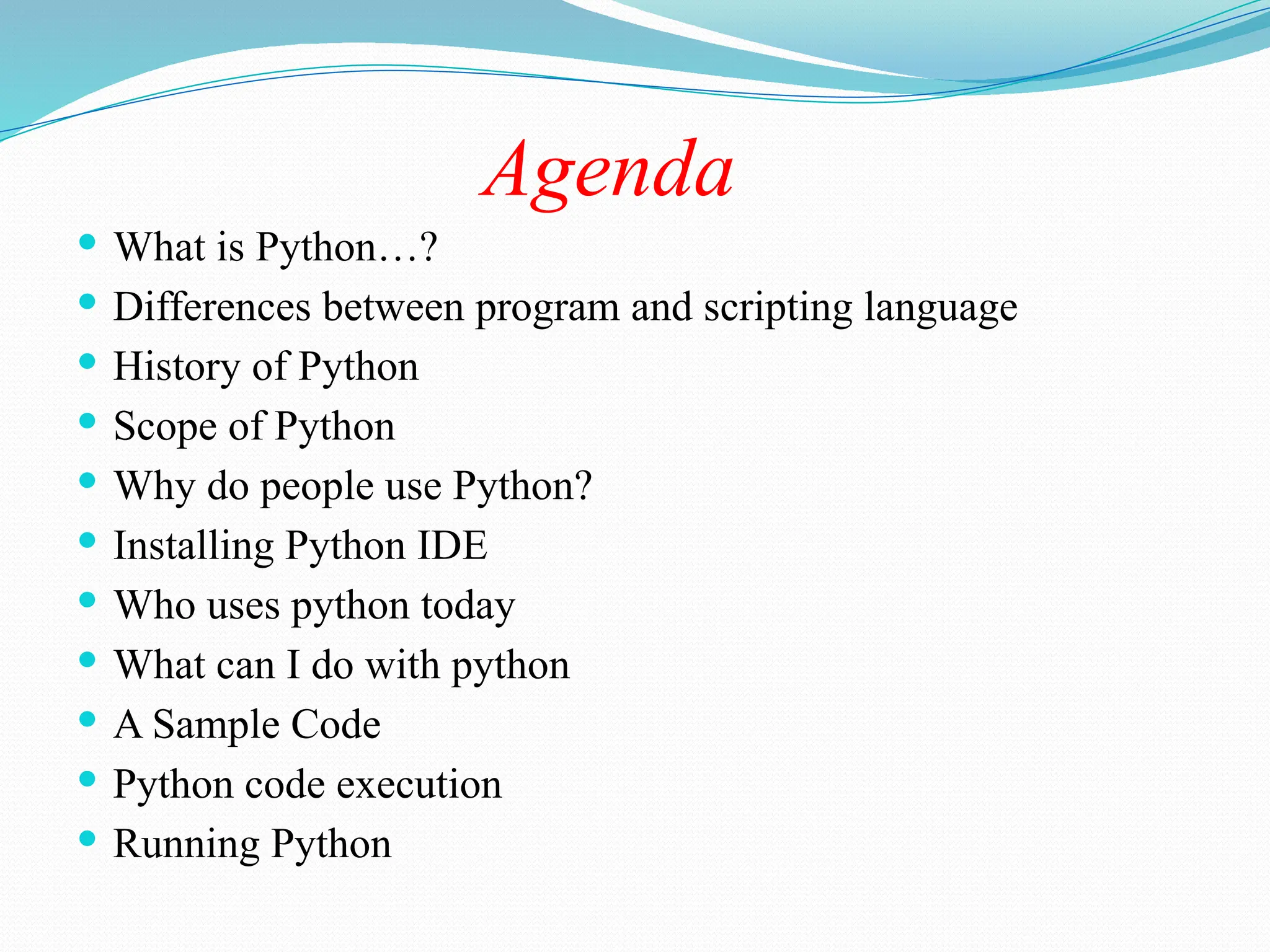
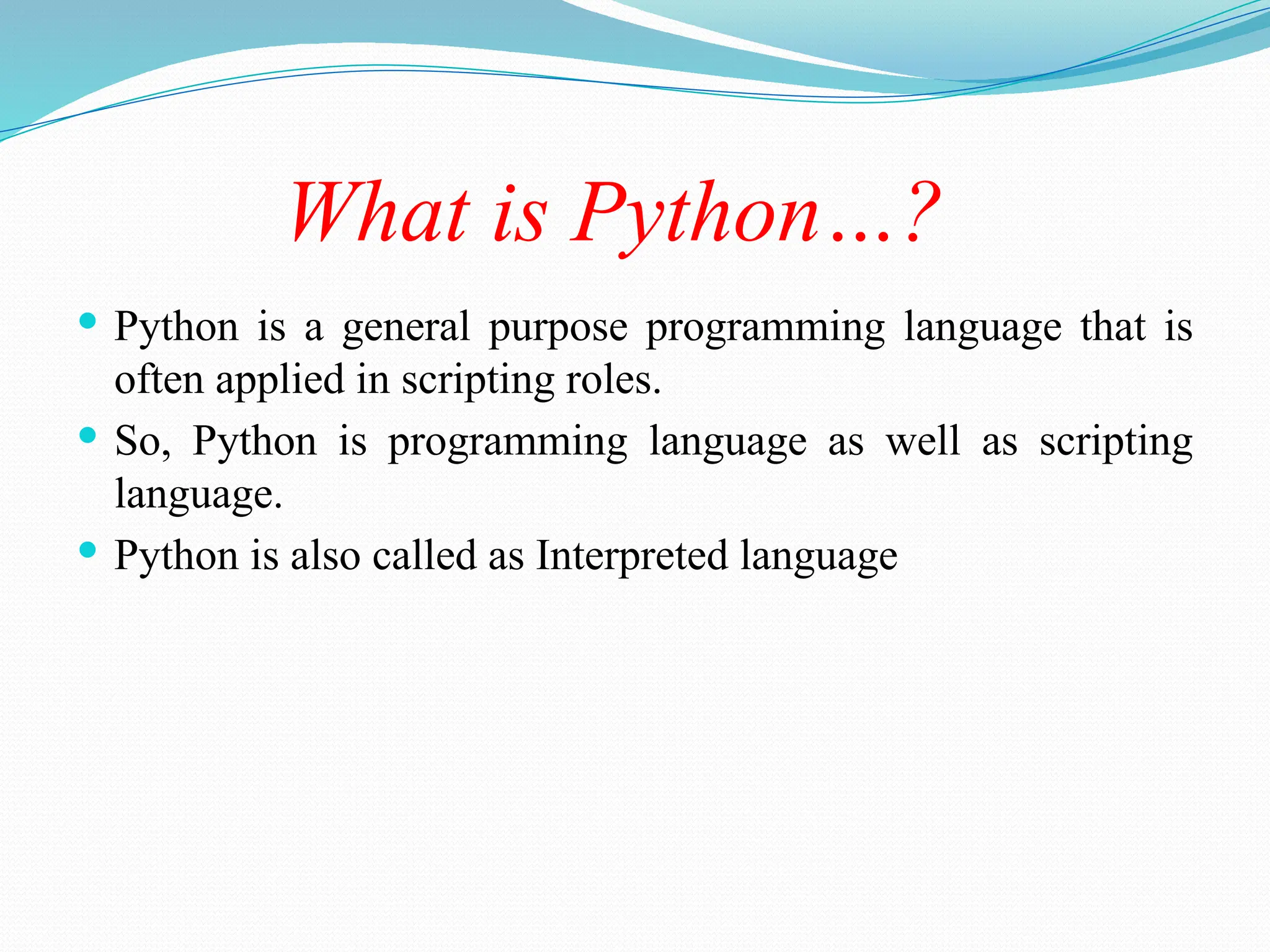
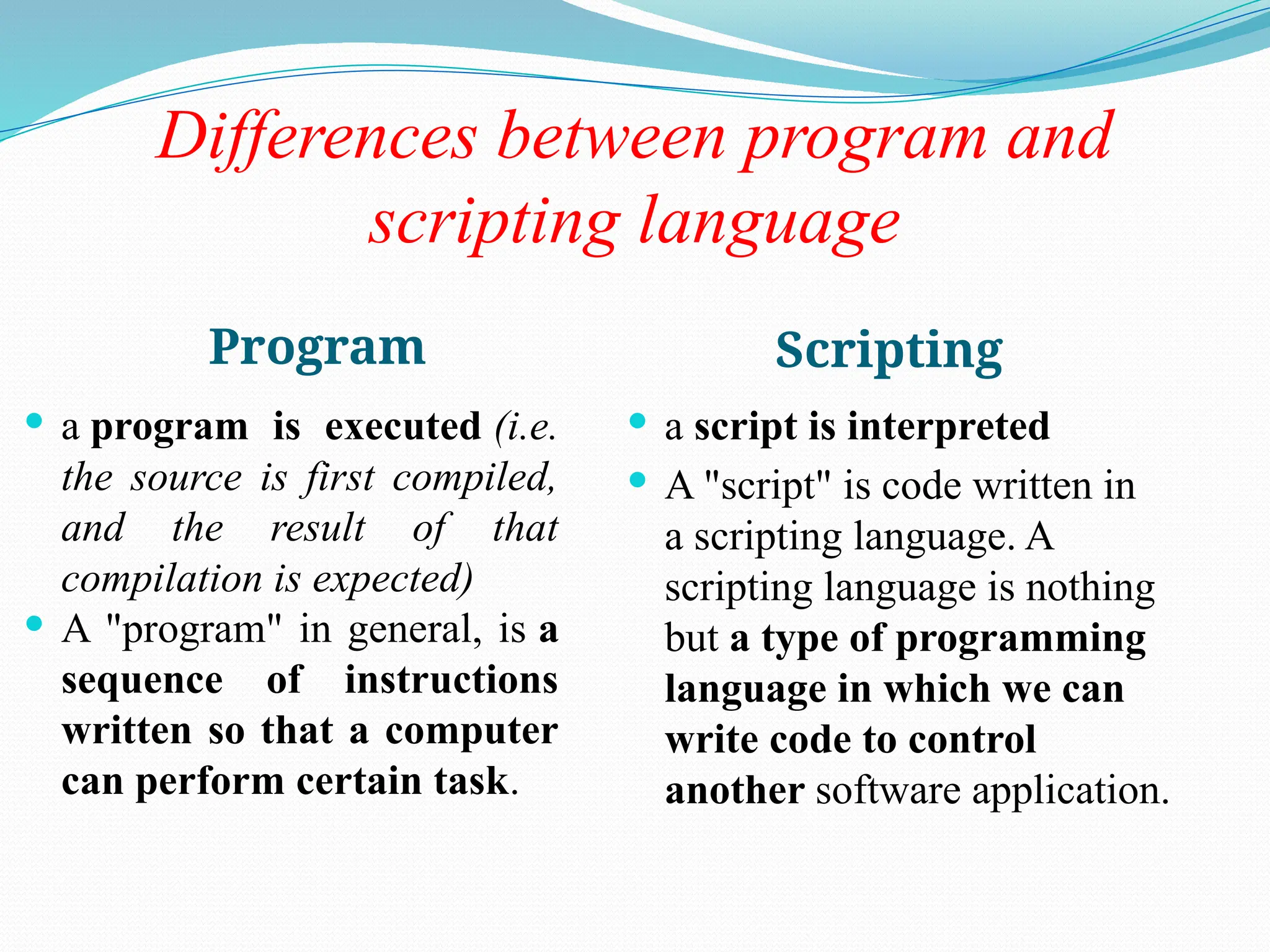
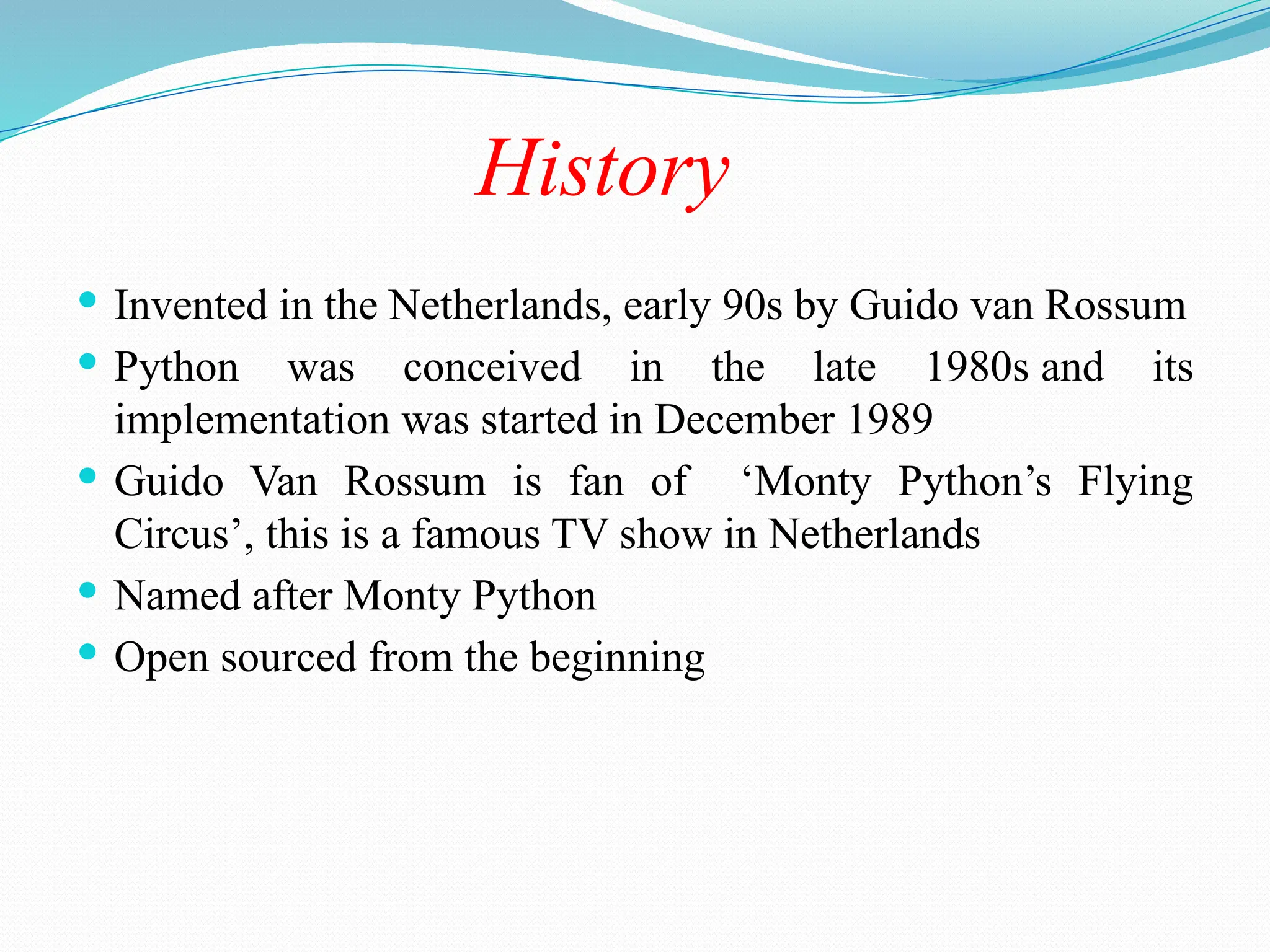
![Why was python created?
"My original motivation for creating Python was
the perceived need for a higher level language in
the Amoeba [Operating Systems] project.
I realized that the development of system
administration utilities in C was taking too long.
Moreover, doing these things in the Bourne shell
wouldn't work for a variety of reasons. ...
So, there was a need for a language that would
bridge the gap between C and the shell”
- Guido Van Rossum](https://image.slidesharecdn.com/python-240827065451-5fae7135/75/introduction-to-python-in-computer-graphics-pptx-6-2048.jpg)
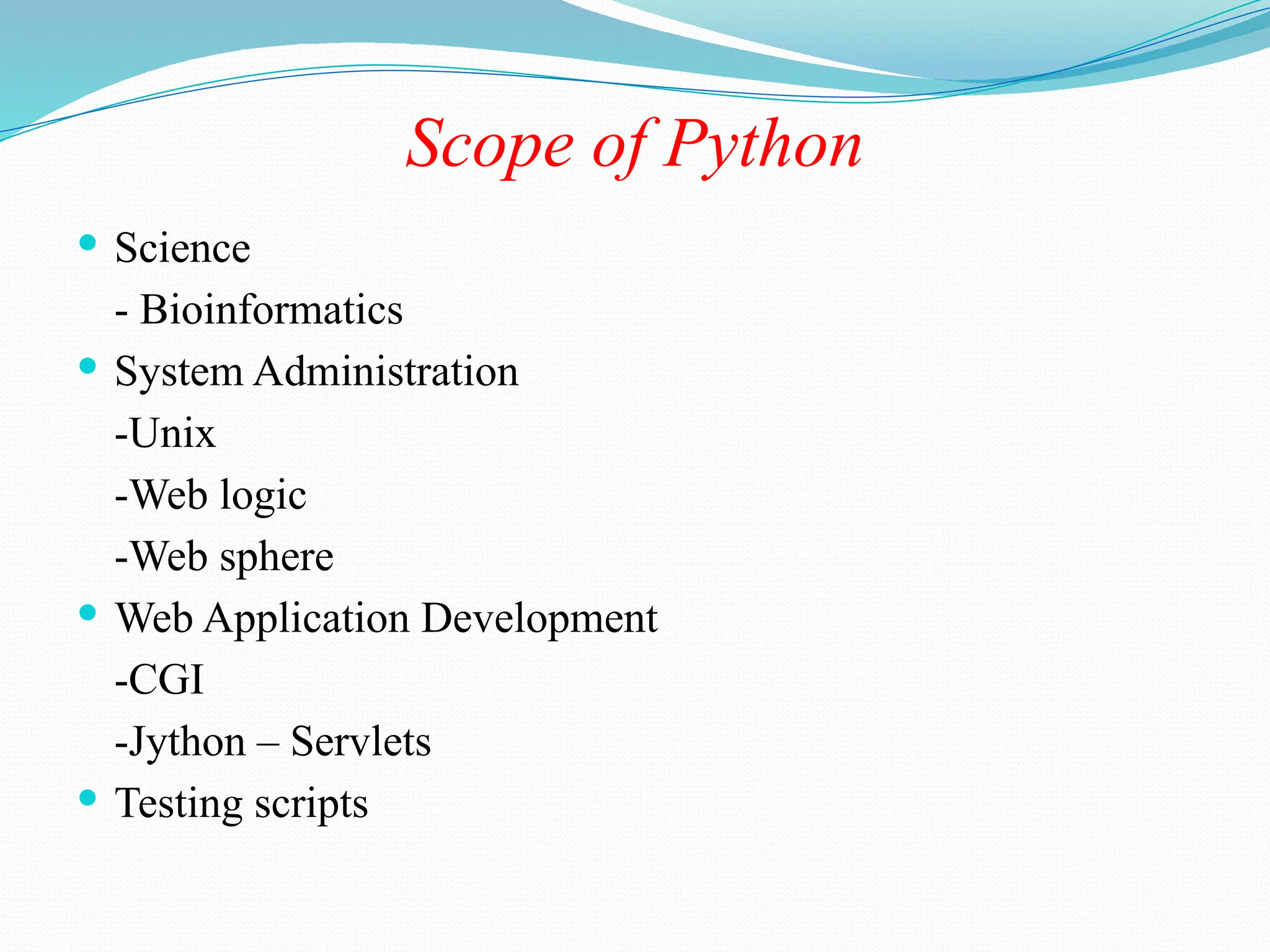
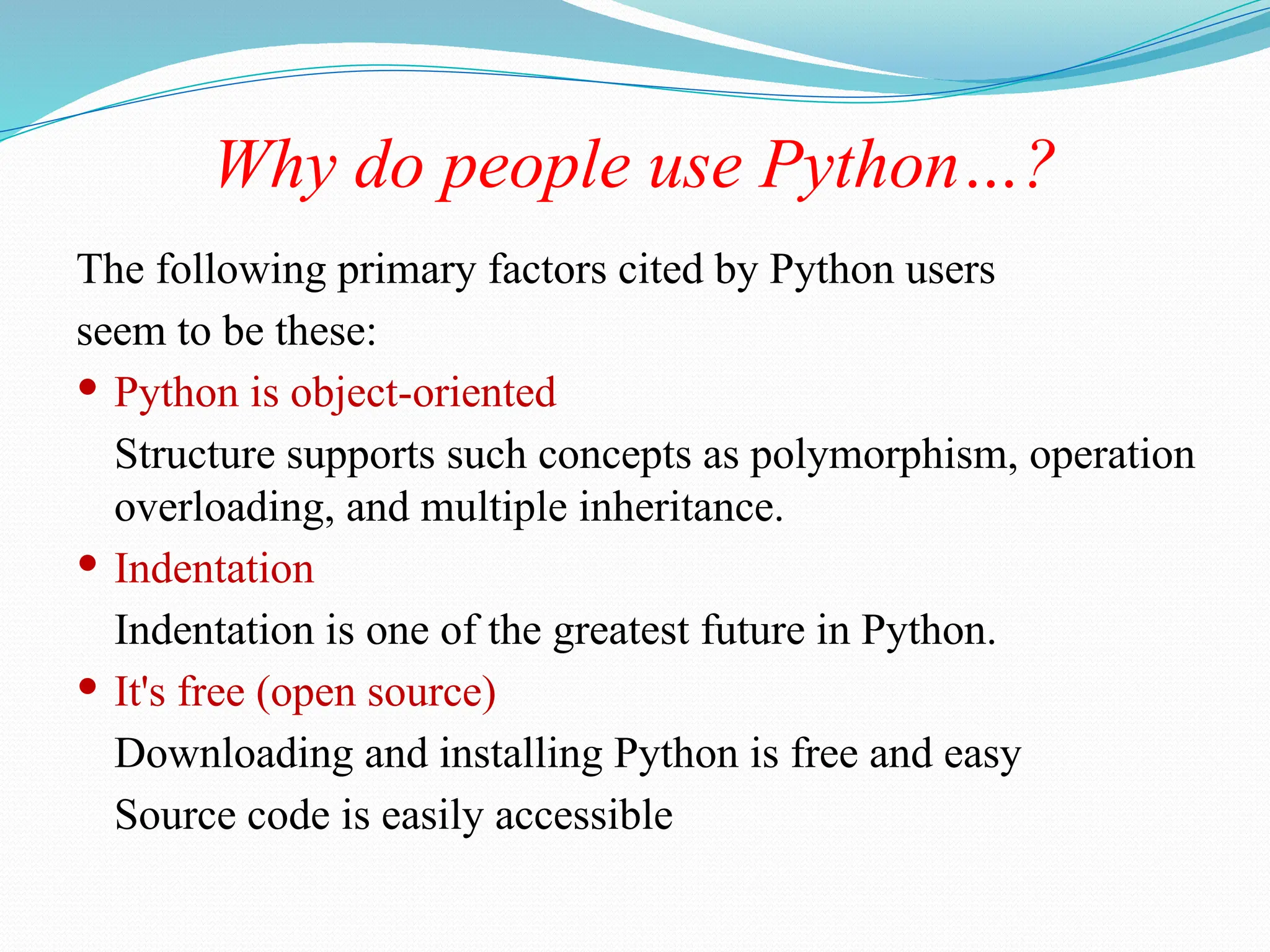
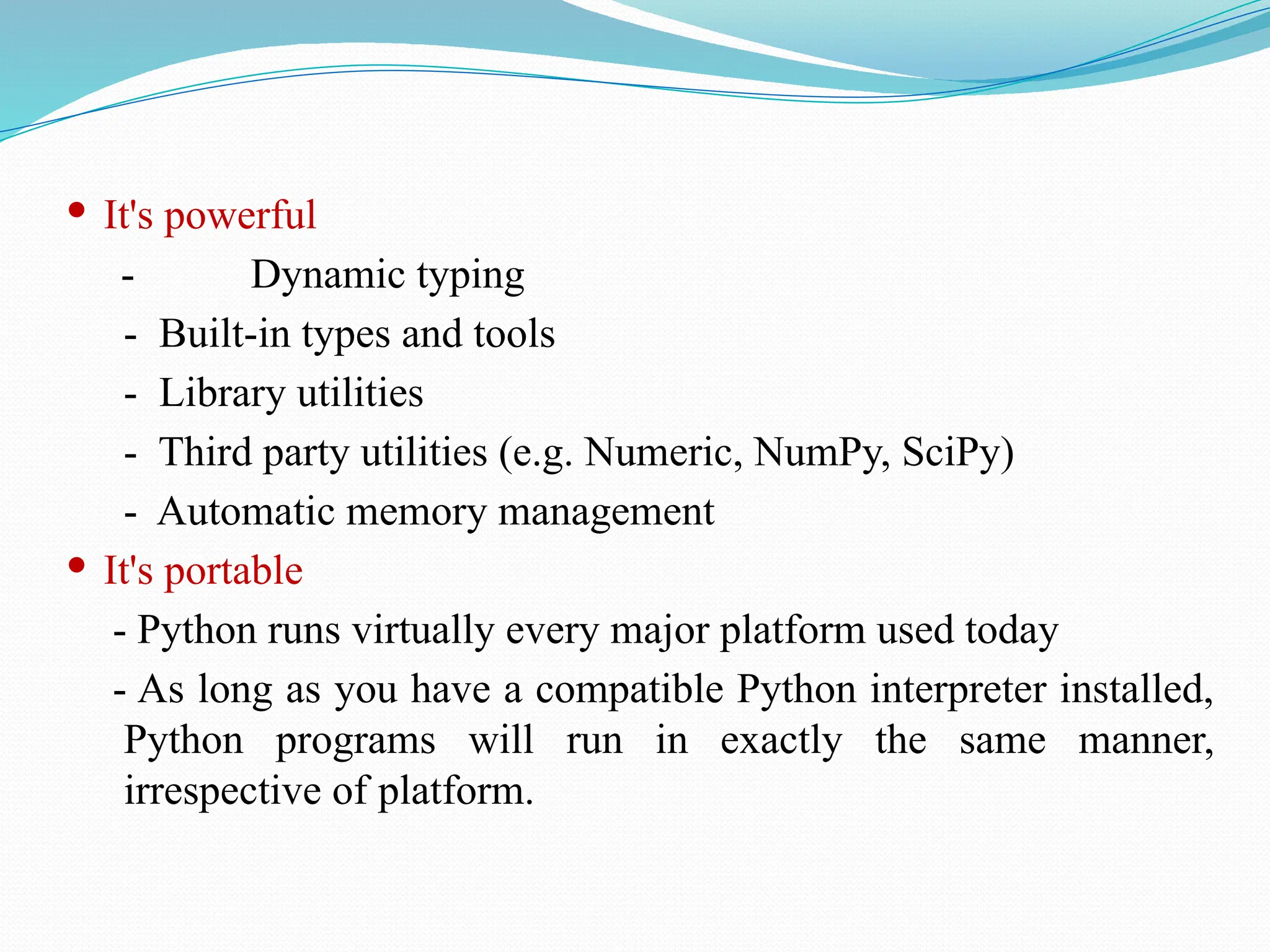
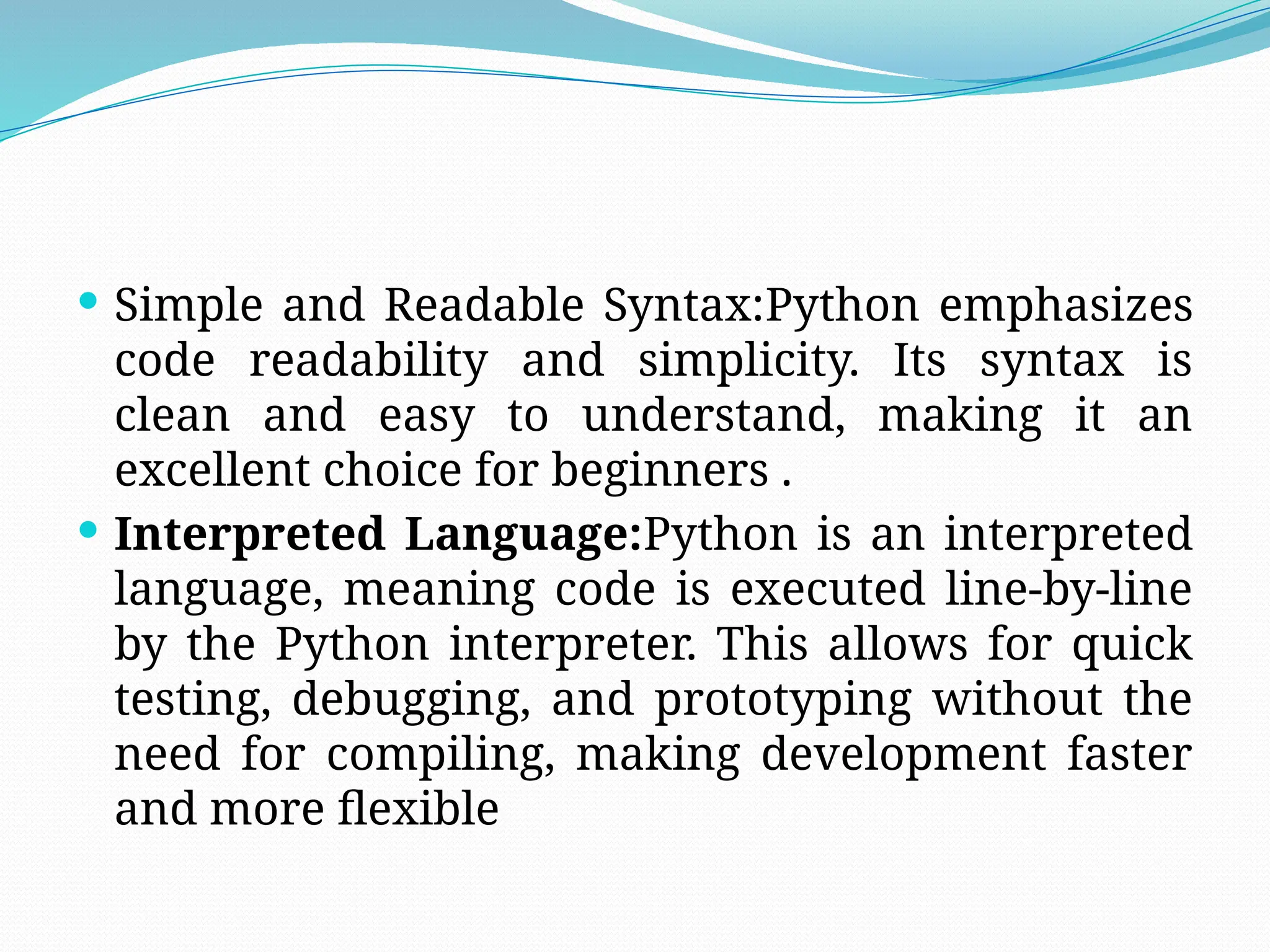
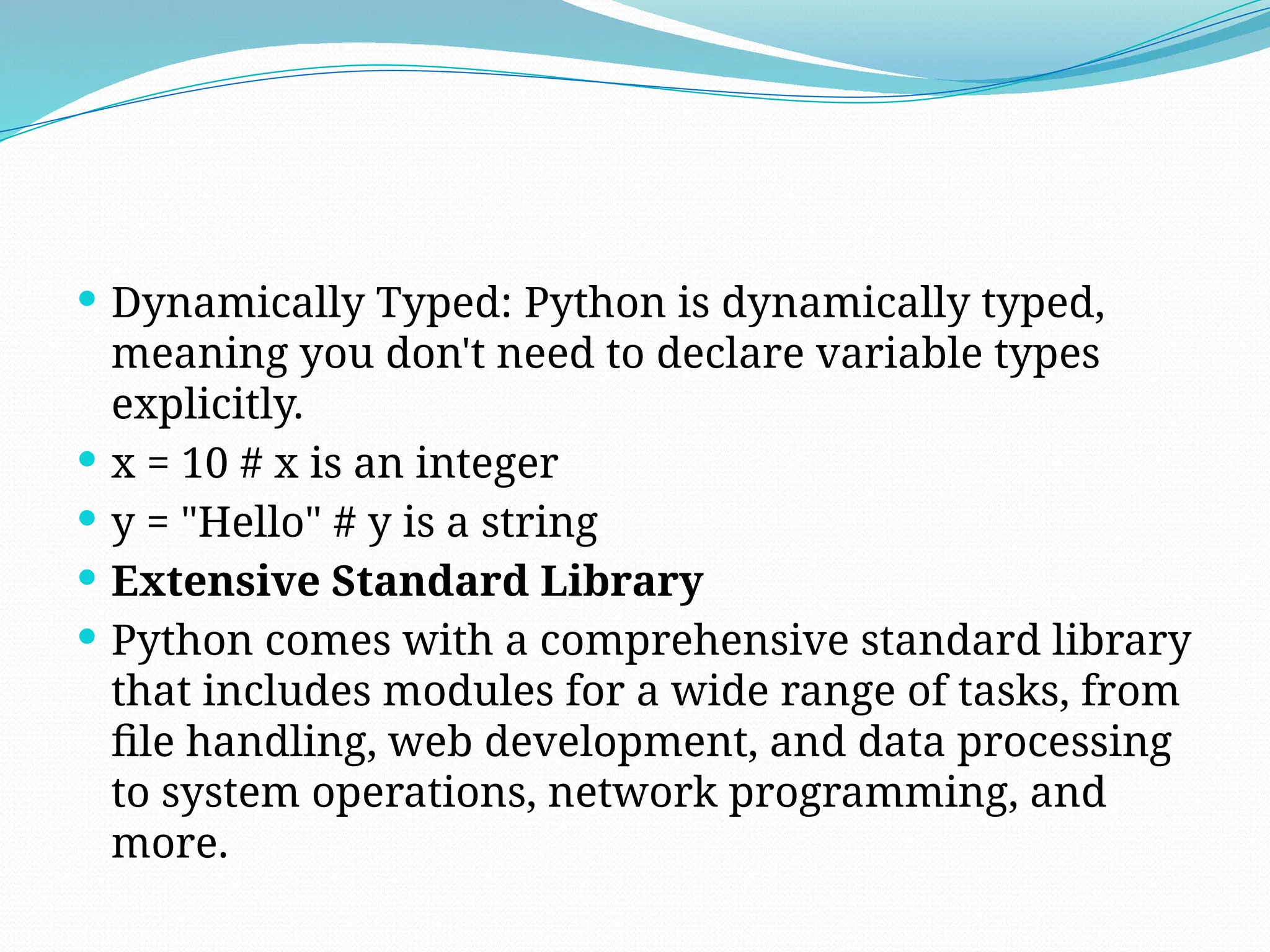
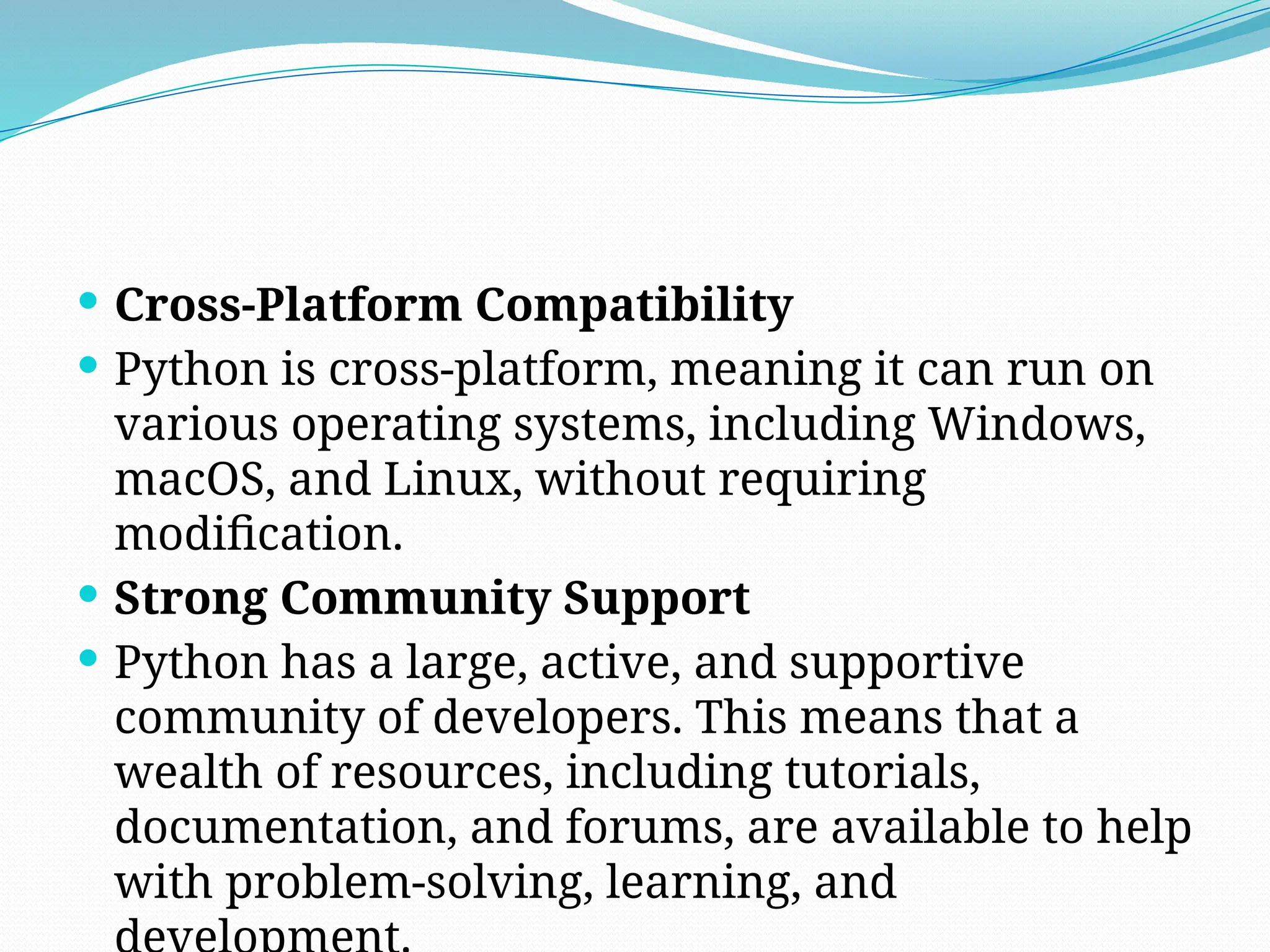
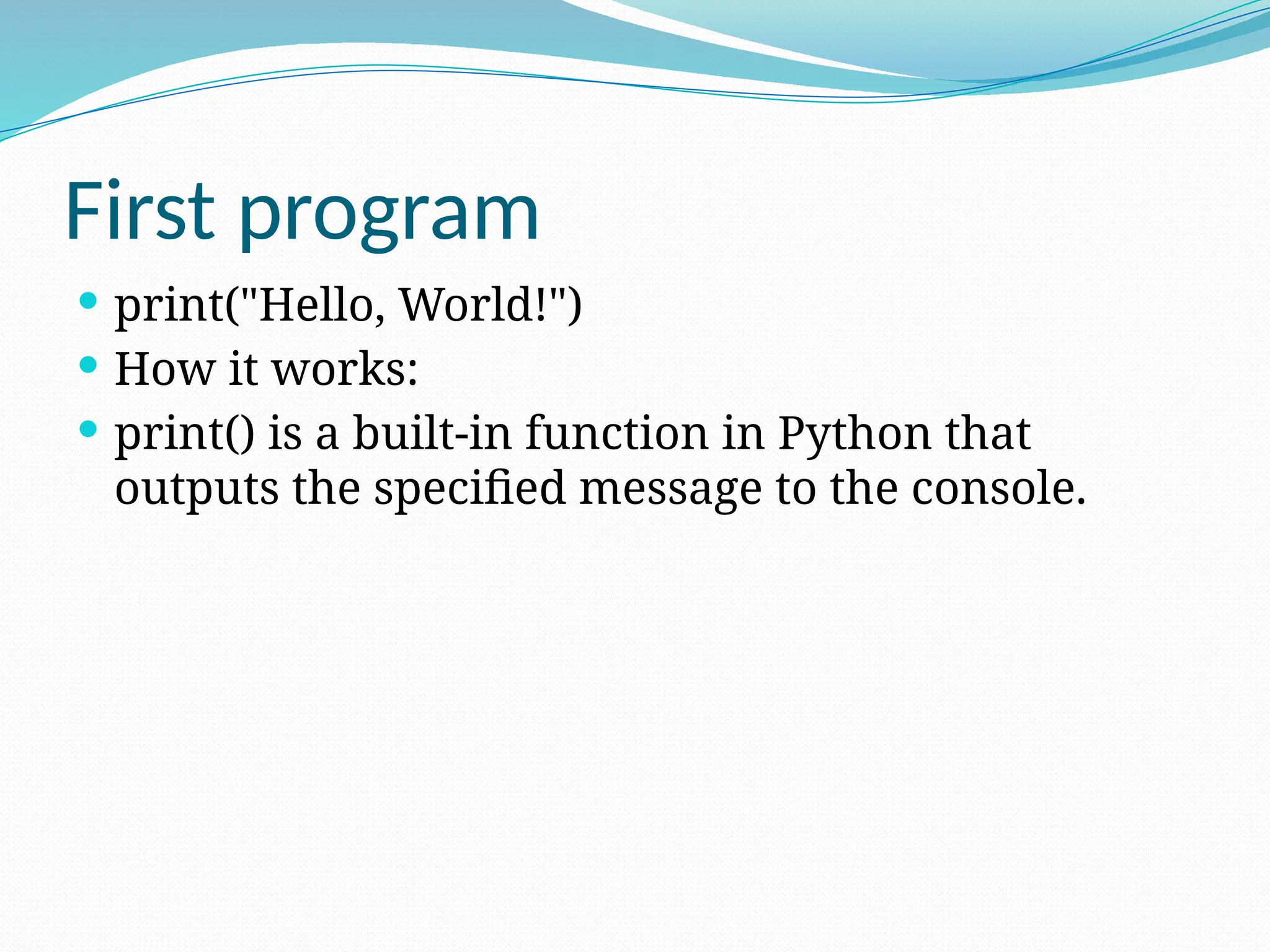
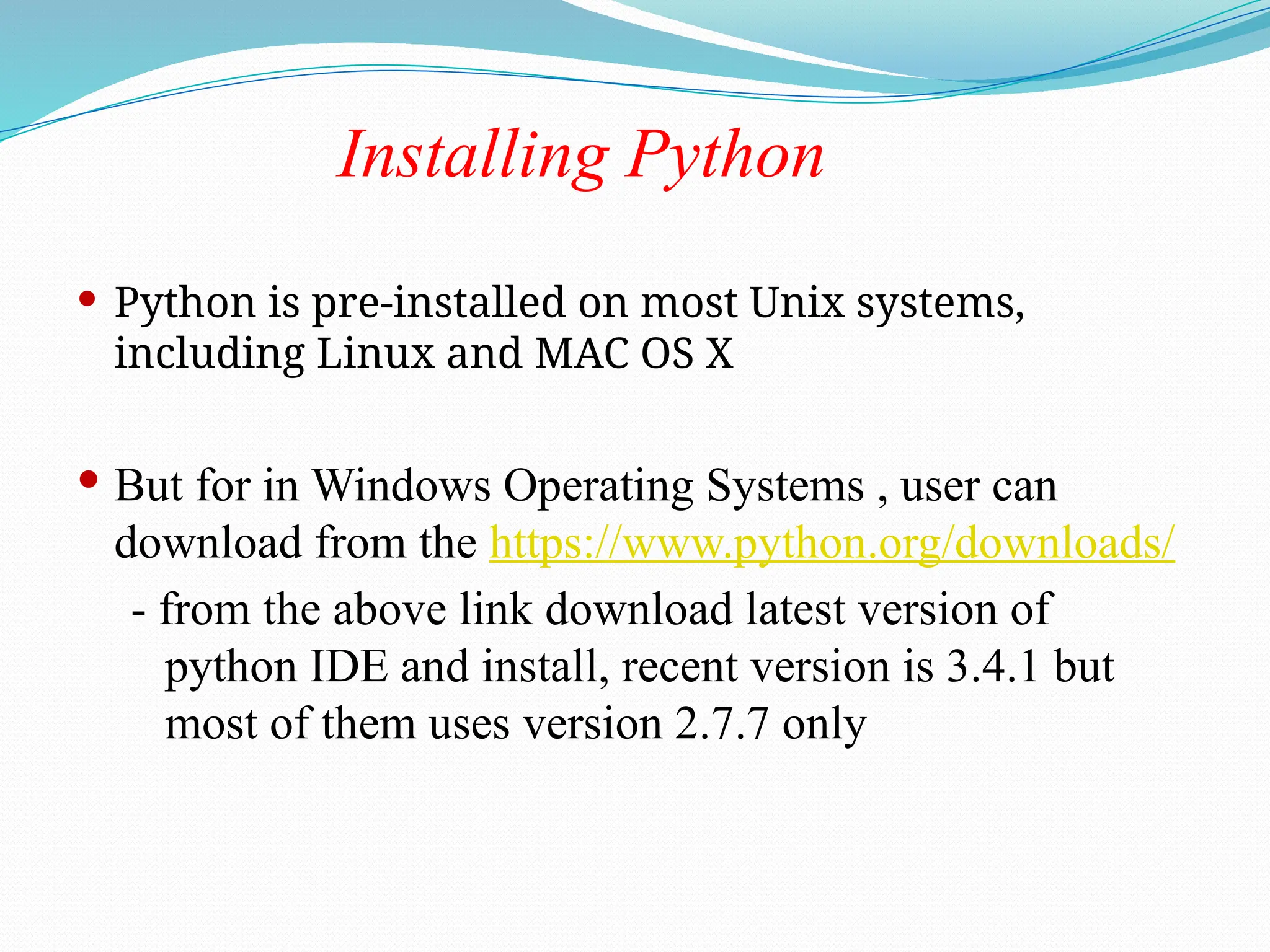
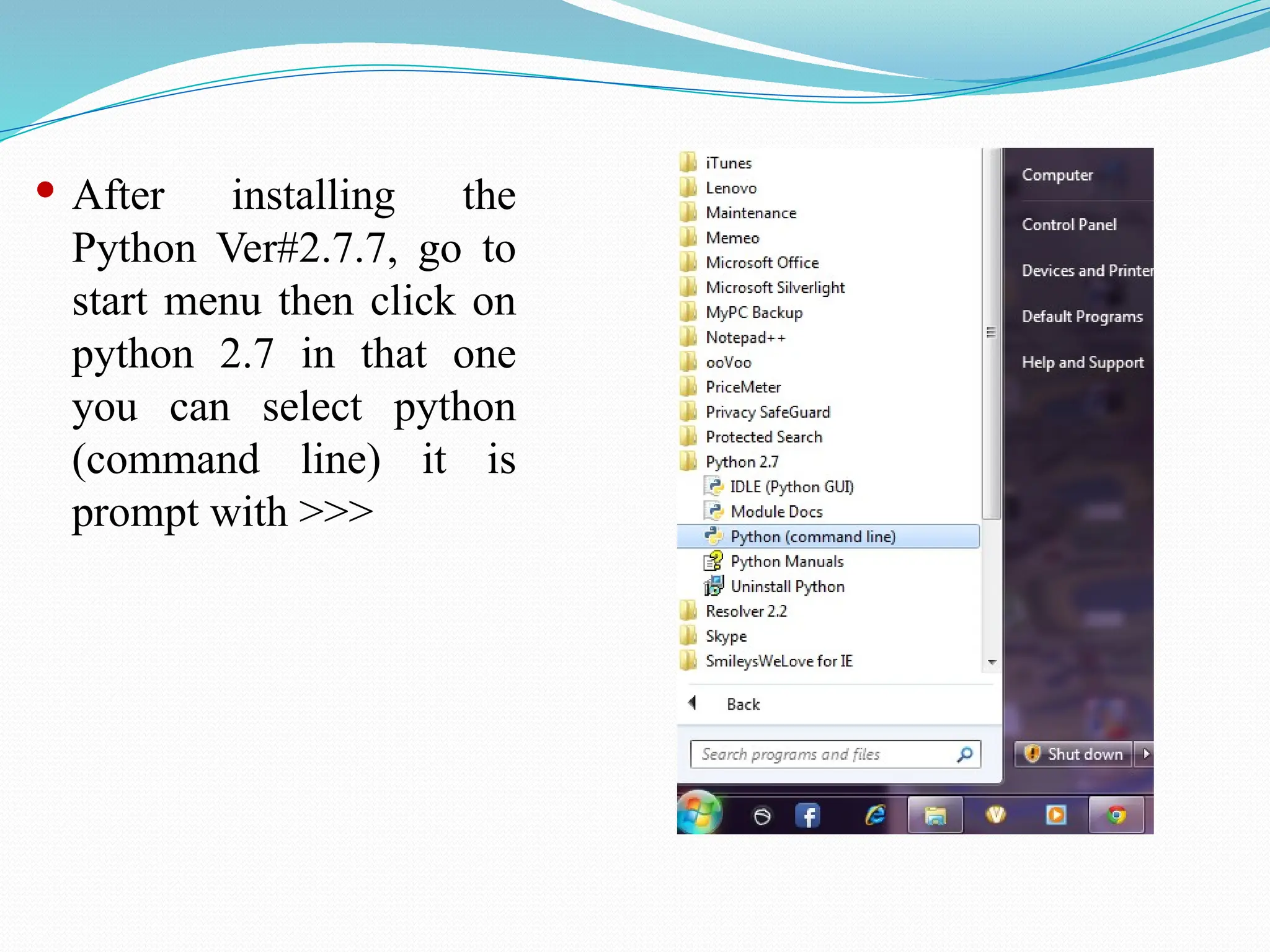
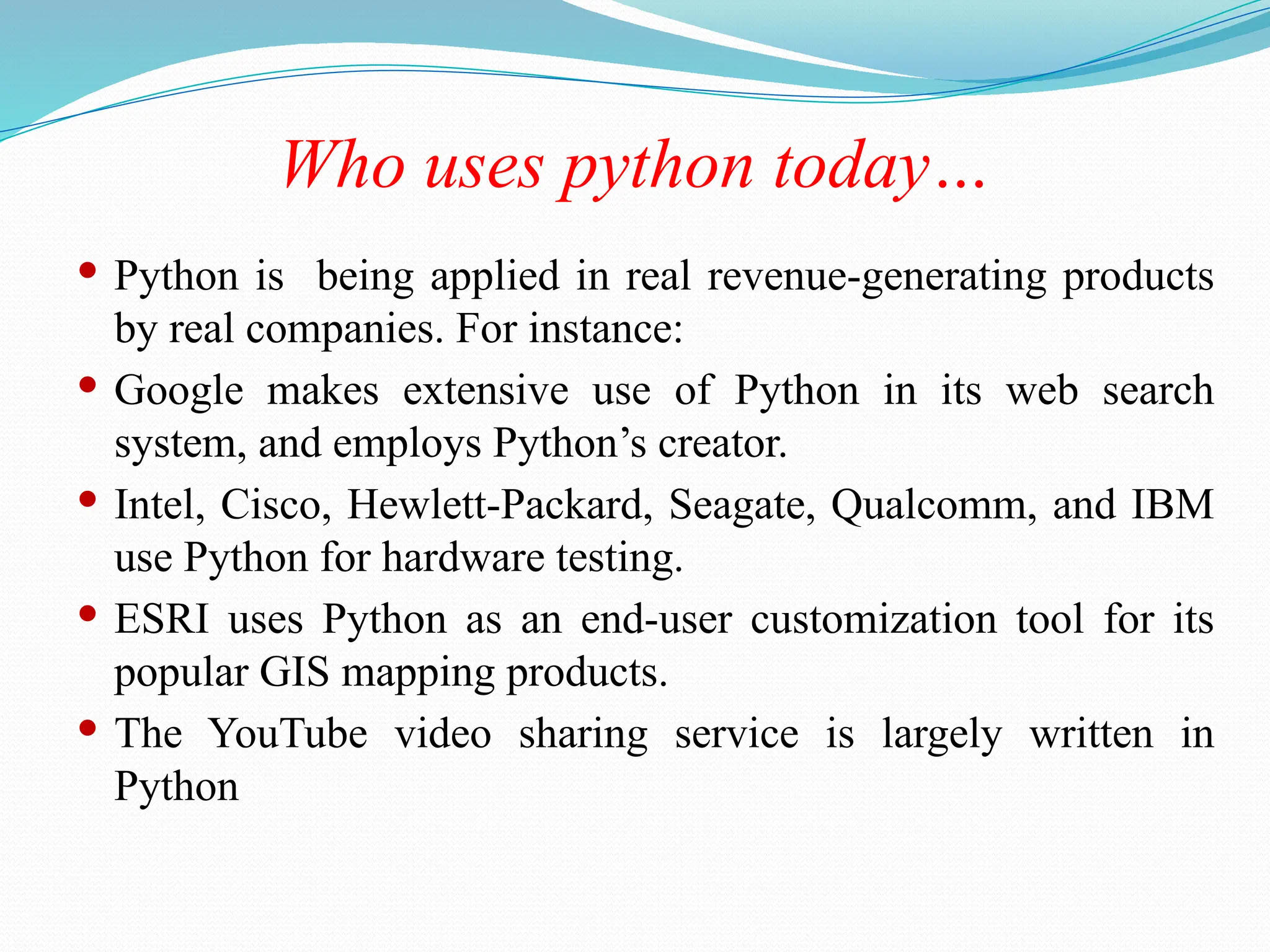
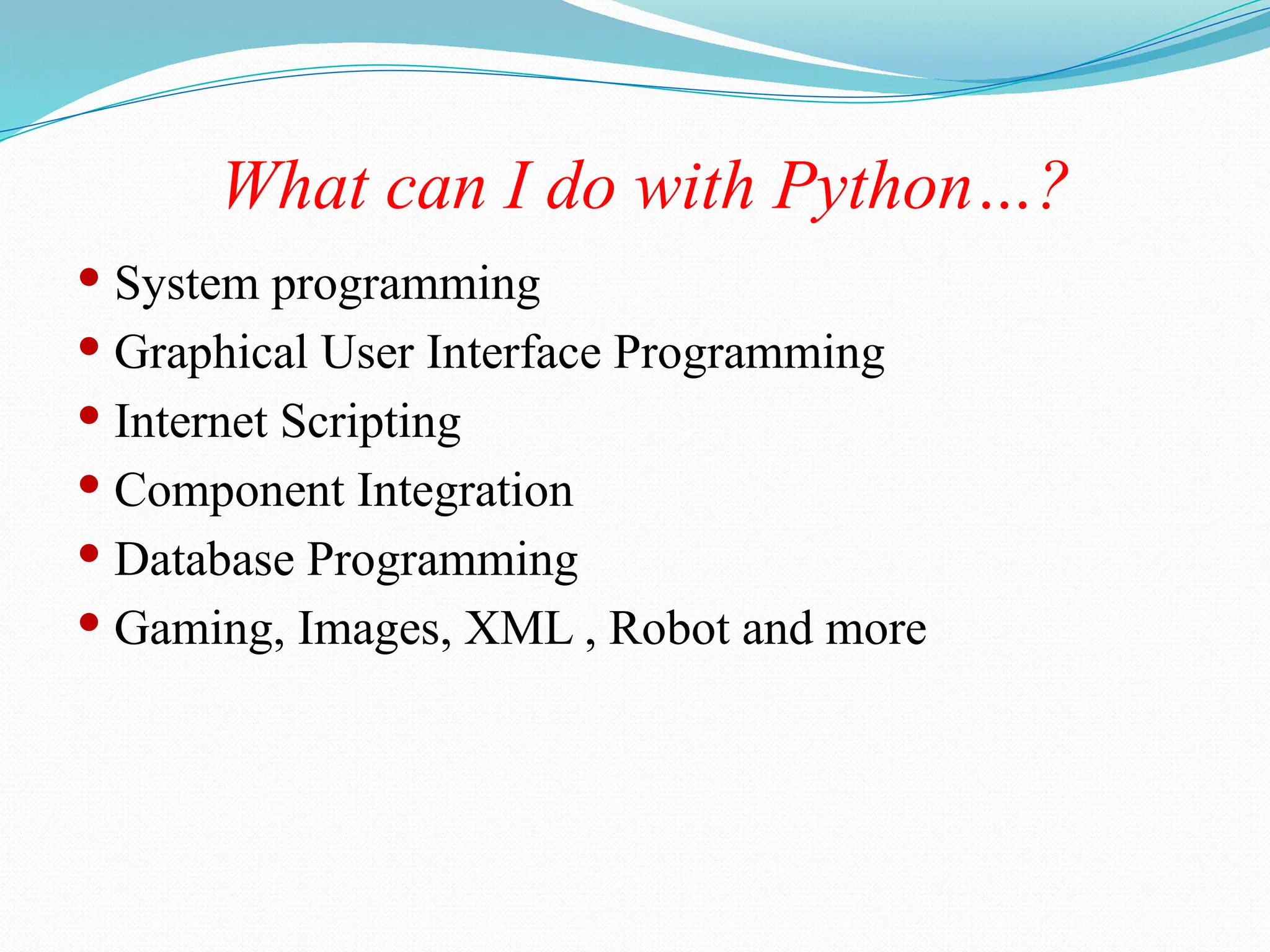
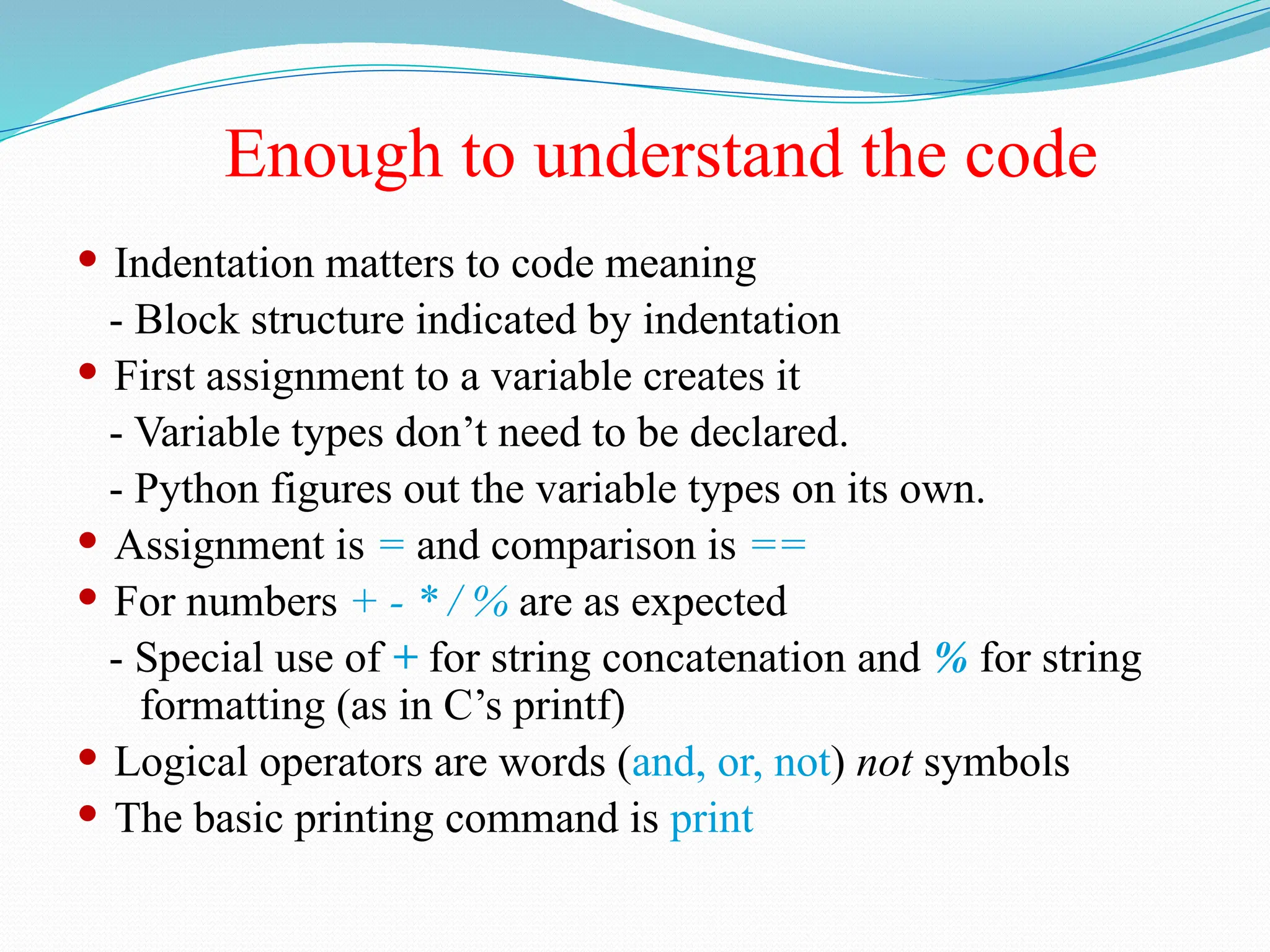
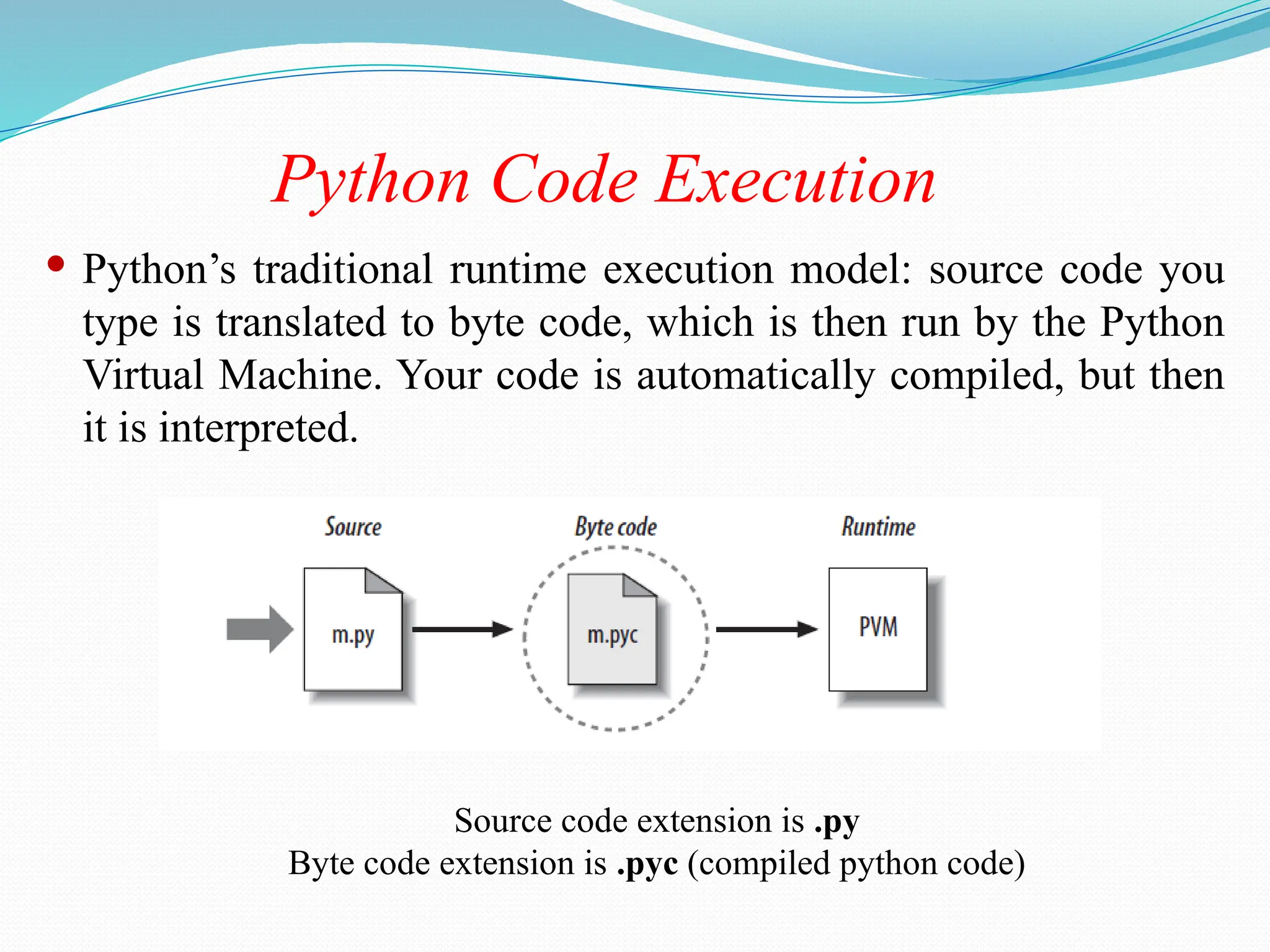
![Running Python
Once you're inside the Python interpreter, type in commands at will.
• Examples:
>>> print 'Hello world'
Hello world
# Relevant output is displayed on subsequent lines without the >>>
symbol
>>> x = [0,1,2]
# Quantities stored in memory are not displayed by default
>>> x
# If a quantity is stored in memory, typing its name will display it
[0,1,2]
>>> 2+3
5](https://image.slidesharecdn.com/python-240827065451-5fae7135/75/introduction-to-python-in-computer-graphics-pptx-20-2048.jpg)